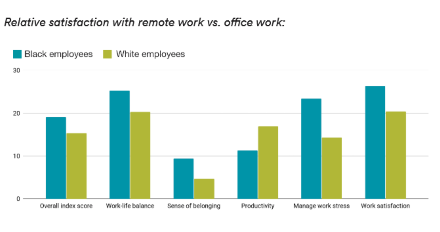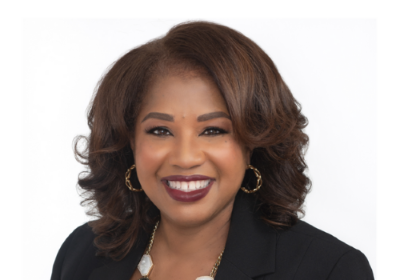Inclusive Wellness Series: How to create an inclusive mental wellness program
10 ideas for supporting mental health for the whole workforce.

Wellness and inclusion are top of mind for many organizations, especially those looking to retain and attract talent, raise productivity rates and lower healthcare costs.
In this three-part series, Workplace Wellness Insider talks with subject matter experts that offer advice and experience with creating inclusive programs around physical, financial and emotional wellness. We first covered physical and financial wellness. Next up in the series: mental wellness programs.
Organizations searching for more inclusive mental health benefits know the value of happy employees.

“Mental health and emotional well-being are undoubtedly two of the top concerns that company leaders such as HR, employee benefits, and diversity, equity, inclusion, and belonging (DEIB) leaders are prioritizing for their employees,” says Charmain Jackman, psychologist, consultant and founder of InnoPsych, a mental health advocacy organization specializing in diversity.
According to a Modern Health report, 67% of leaders saw improved productivity when employee mental health was supported. Employees agreed: 79% indicated they were likely to stay at an organization that provided quality mental health resources.
But mental health support means digging deeper when it comes to inclusion. If the organization’s culture isn’t inclusive — including managers trained for empathy — inclusivity efforts may fall flat no matter how inclusive the benefits.

Numerous 2021 studies and surveys revealed that most remote workers didn’t want to return to a full-time office setting. But 97% of Black remote workers rejected the idea of returning to work in a Future Forum report. The report gave a partial explanation related to workers feeling emotionally unsafe at work.
To create a more inclusive, emotionally-safe workplace, Jackman recommends these strategies:
Conduct an emotional well-being audit. To assess the current emotional well-being strategy, organizations should review existing policies and practices. Identifying which employee segments have historically engaged less with mental health benefits and removing barriers to access.
Choose diverse vendors and providers. Jackman says choose mental health and emotional well-being service providers that are culturally, racially, ethnically and linguistically diverse.
Market benefits inclusively. “I recommend that company leaders engage both an emotional well-being and a DE&I lens in the marketing and outreach of the resources to their employees,” Jackman says. “Specifically, given the stigma around mental health, employers will want to craft messages that can effectively address the different cultural barriers and promote positive messages about mental health.”
Train leaders. When leaders speak with knowledge and empathy around mental health, it empowers employees to seek out the mental health care they need. Well-trained managers can also help identify those in need before a crisis erupts.
Fresenius Medical Care, a global kidney disease service provider, employs more than 125,000 employees worldwide. Its U.S. headquarters is located in Waltham, Massachusetts.
Its North American division surveyed employees as it reviewed its inclusive benefits strategy this year. It also consulted with its employee resource groups when designing its wellness program.

“As a result, benefit offerings for 2022 are a great example of how we reflect our values and create an inclusive environment,” says Mignon Early, vice president of DE&I at Fresenius Medical Care North America. “Our commitment to DE&I also demonstrates our desire to prioritize an inclusive culture and develop a team that reflects the diversity of our patients.”
To keep mental health inclusive and accessible, Fresenius eliminated in-network office copays, lowered coinsurance and expanded its employee assistance program for more free counseling visits. It also offered various emotional support vehicles that allow for in-home or other preferred safe places for counseling. It uses tools like MyStrength virtual, AbleTo, Talkspace and Sanvello for cognitive behavioral therapy, virtual and text therapy, and mindfulness.
“These benefits allow employees to confidentially and privately ask for support on their own time when they feel most comfortable,” Early says. “We also now offer resources that include a crisis hotline, trans lifeline, trans-family resources and other resources for members of the LGBTQIA community.”
Jackman says other actions that can lead to more inclusive programs include:
- Providing a range of mental health resources that are prevention-focused.
- Organization-wide wellness days that provide content on emotional well-being strategies such as mindfulness, positive psychology and healing circles.
- Expanding the definition of sick time to include time off for mental health support.
- Ensure equitable access to mental health resources for both hourly and salaried workers.
- Creating an easily accessible platform so that all employees can find the available resources.
- Flexible work schedules and work-from-home options.
“COVID-19 and the racial violence toward people of color have highlighted the health and mental health inequities and the impact of discrimination in the workplace,” Jackman says. “What we are seeing is that employees of color are finally feeling more empowered to ask for resources that will serve their needs.”
COMMENT
Ragan.com Daily Headlines
RECOMMENDED READING
Tags: DE&I, emotional wellness, Fresenius Medical Care, inclusive, InnoPsych, mental health






